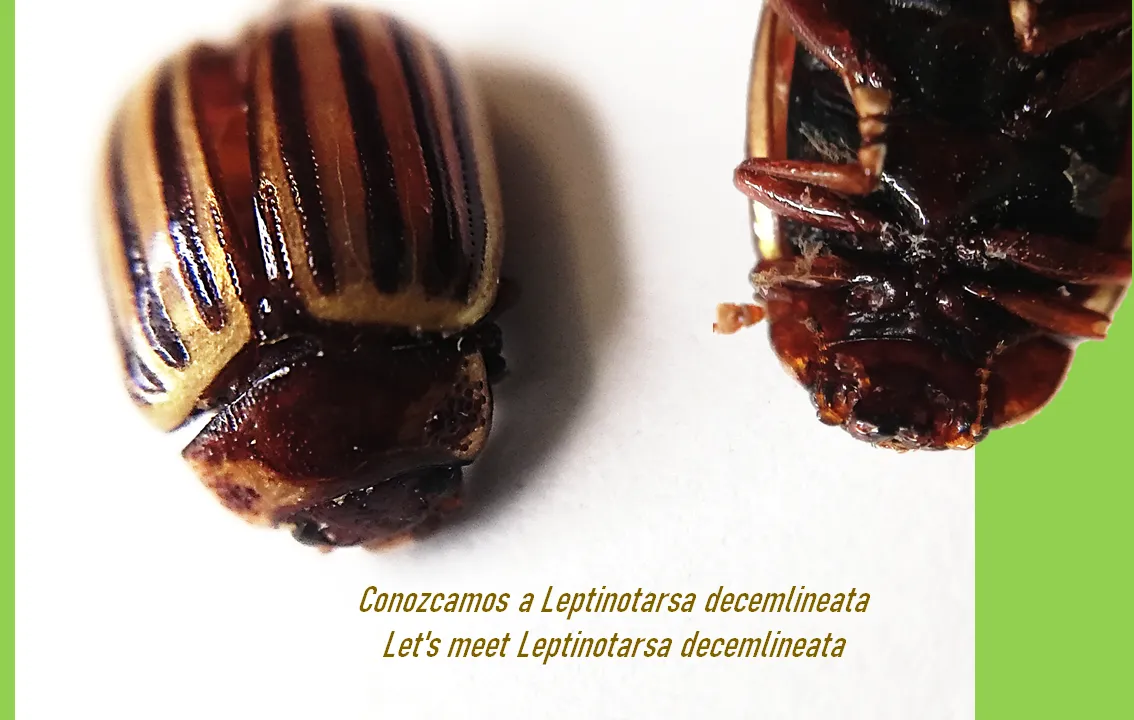
La diversidad de los insectos es increíble. Hoy traigo al blog uno de ellos, lamentablemente parte de mi colección “naturaleza muerta” usada con propósito educativo. No dejarme deleitar por su color dorado a la luz del sol, era inevitable, y por ser primera vez que lo observaba, era bueno realizar la clasificación taxonómica.
The diversity of insects is incredible. Today I bring to the blog one of them, unfortunately part of my "still life" collection used for educational purposes. Not to be delighted by its golden colour in the sunlight was unavoidable, and as it was the first time I observed it, it was good to make the taxonomic classification.
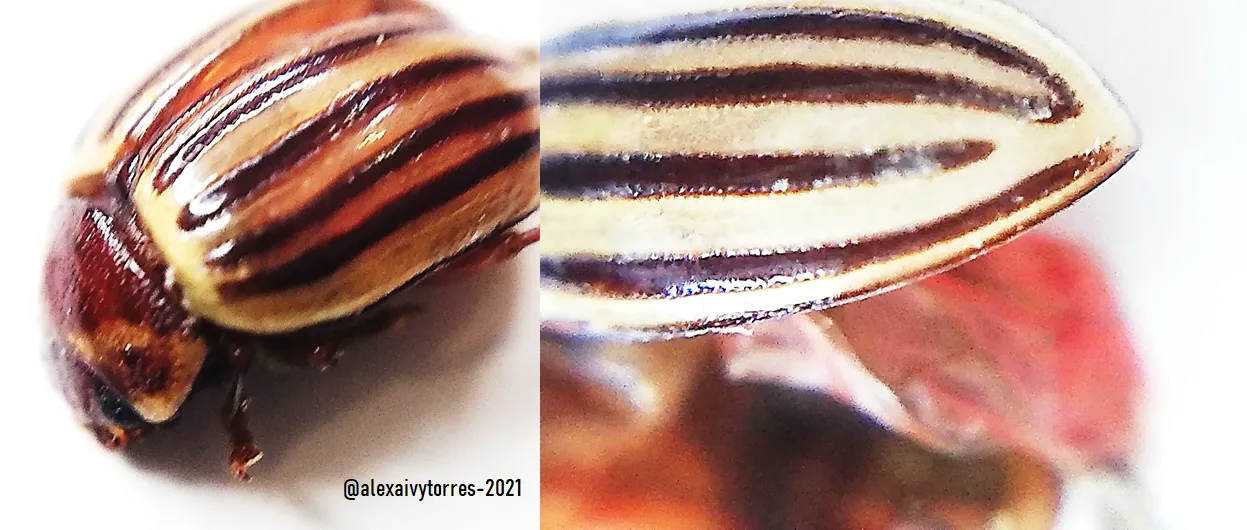

El ejemplar se colectó en Venezuela, Barquisimeto Zona Oeste, cercano a una alberca.
The specimen was collected in Venezuela, Barquisimeto Zona Oeste, near a swimming pool.
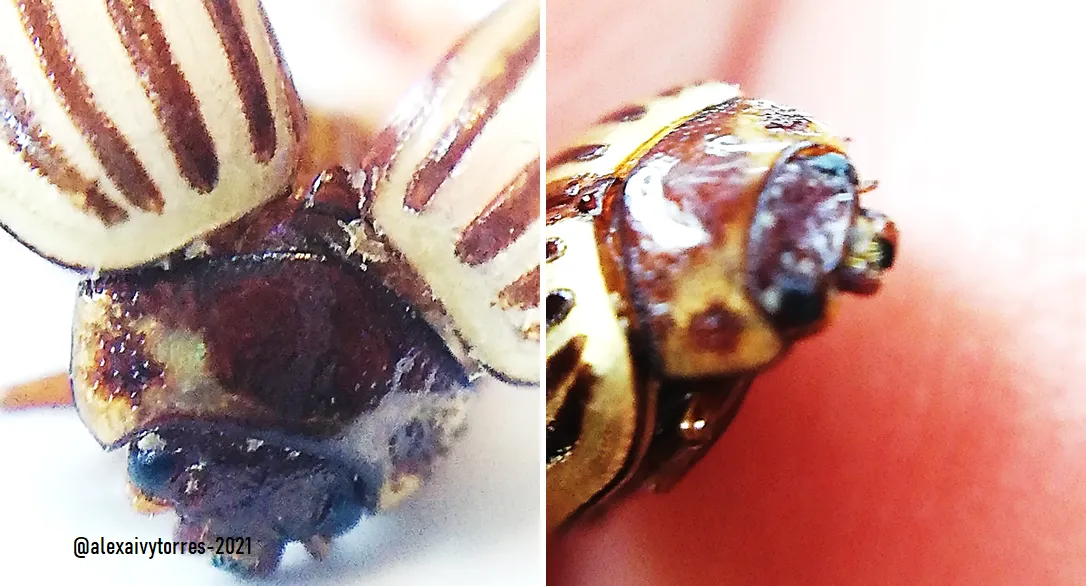

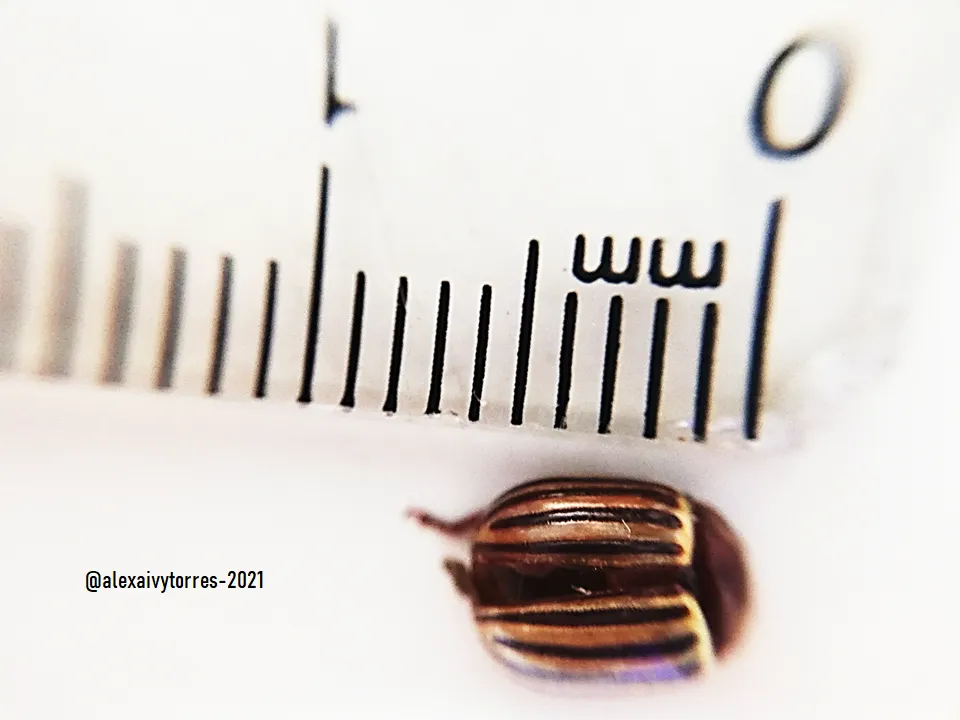
A rasgos generales se trata de un insecto, con tres tagmas observables (Cabeza, tórax y abdomen) con sus seis patas. Específicamente Coleóptero, de la familia Chrysomelidae. Élitros observables, con 4 rayas oscuras gruesas y uno más fino hacia el borde que se une para cerrarlos y proteger el área del abdomen. El espécimen mide aproximadamente 0,6 mm. Su forma es oval, con color de fondo ocre-dorado y el pronoto, tiene manchas irregulares, como especie de motas negras, como sus patas. A nivel ventral, sus estructuras mantienen color oscuro.
In general terms, it is an insect, with three observable tagmae (head, thorax and abdomen) with its six legs. Specifically Coleoptera, of the family Chrysomelidae. Observable elytra, with 4 thick dark stripes and a thinner one towards the edge that joins to close them and protect the abdomen area. The specimen measures approximately 0.6 mm. It is oval in shape, with a golden-ochre background colour, and the pronotum has irregular, black speckled spots, like its legs. Ventrally, its structures are dark in colour.
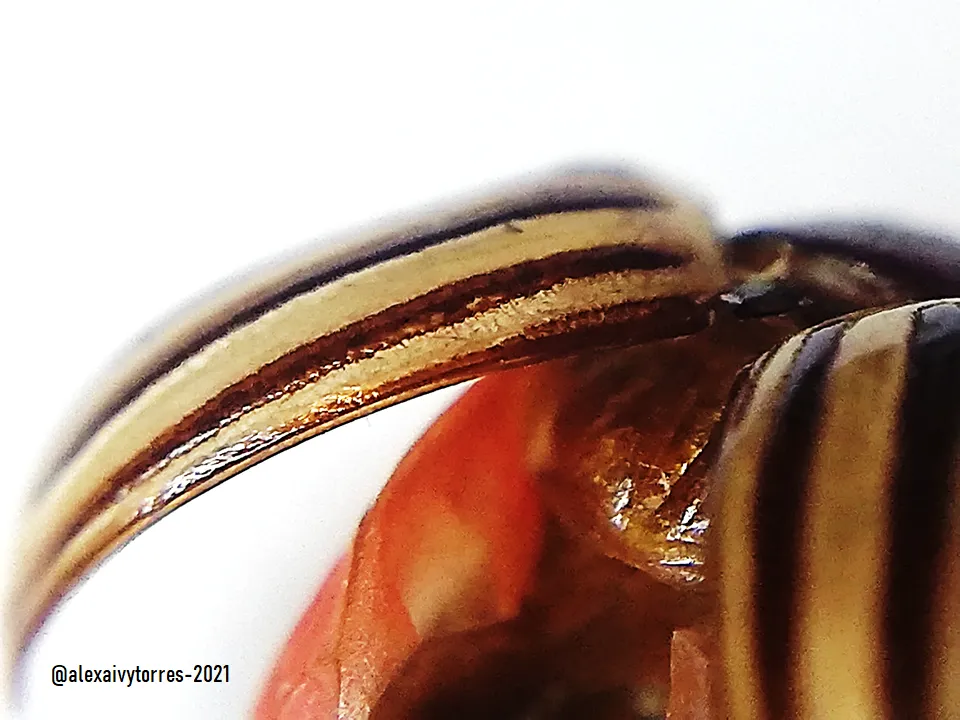
De acuerdo con Bissanti (2021) // According to Bissanti (2021):
”El escarabajo de Colorado de la papa es un holometabulum; los adultos invernan en el suelo y emergen en la superficie con temperaturas del suelo de 25-40 cm de profundidad por encima de 14 ° C. para aparearse el insecto necesita una temperatura diaria promedio de 16 ° C.”
"The Colorado potato beetle is a holometabulum; adults overwinter in the soil and emerge at the surface with soil temperatures 25-40 cm deep above 14 ° C. To mate the insect needs an average daily temperature of 16 ° C. ".

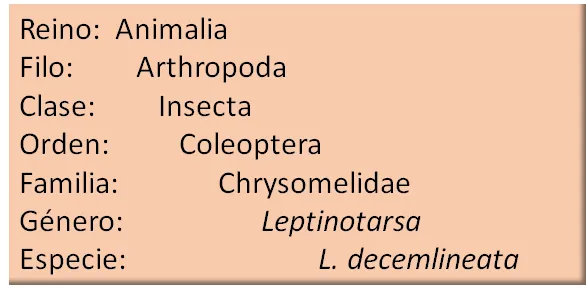
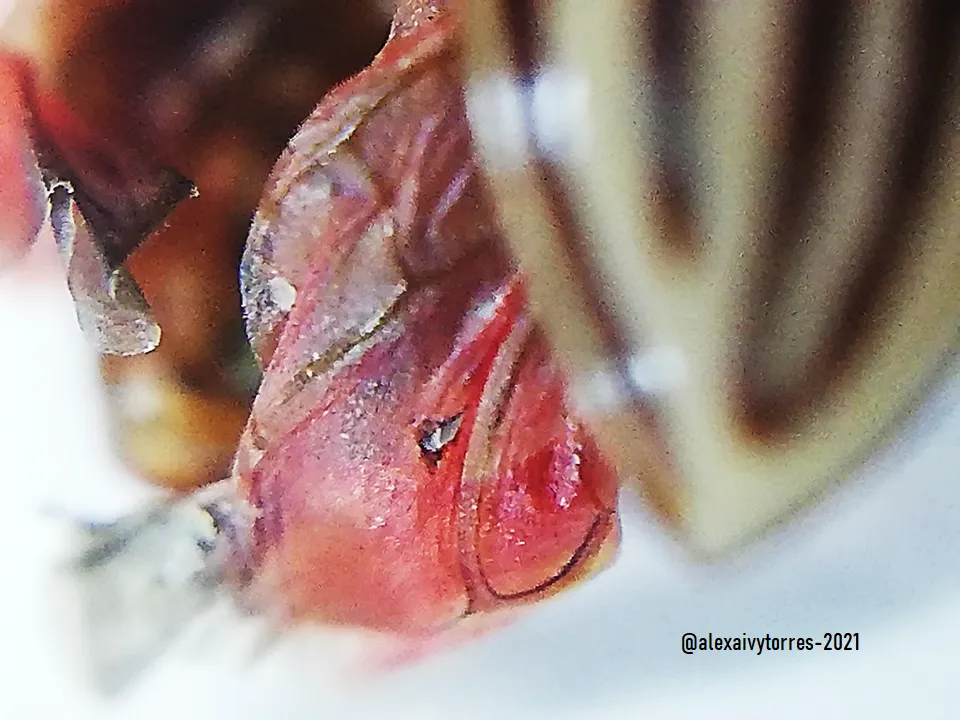
Su nombre común es el escarabajo de la papa. A pesar de que para el humano es visto como una plaga para los cultivos, solo busca sobrevivir, y su alimentación es a base de hojas – Fitófagos-. Cada especie cumple una función en el ecosistema, es el humano y sus prácticas el que las determina como amenaza o no.
Its common name is the potato beetle. Although it is seen by humans as a crop pest, it only seeks to survive, and feeds on leaves - phytophagous. Each species fulfils a function in the ecosystem, it is humans and their practices that determine whether they are a threat or not.
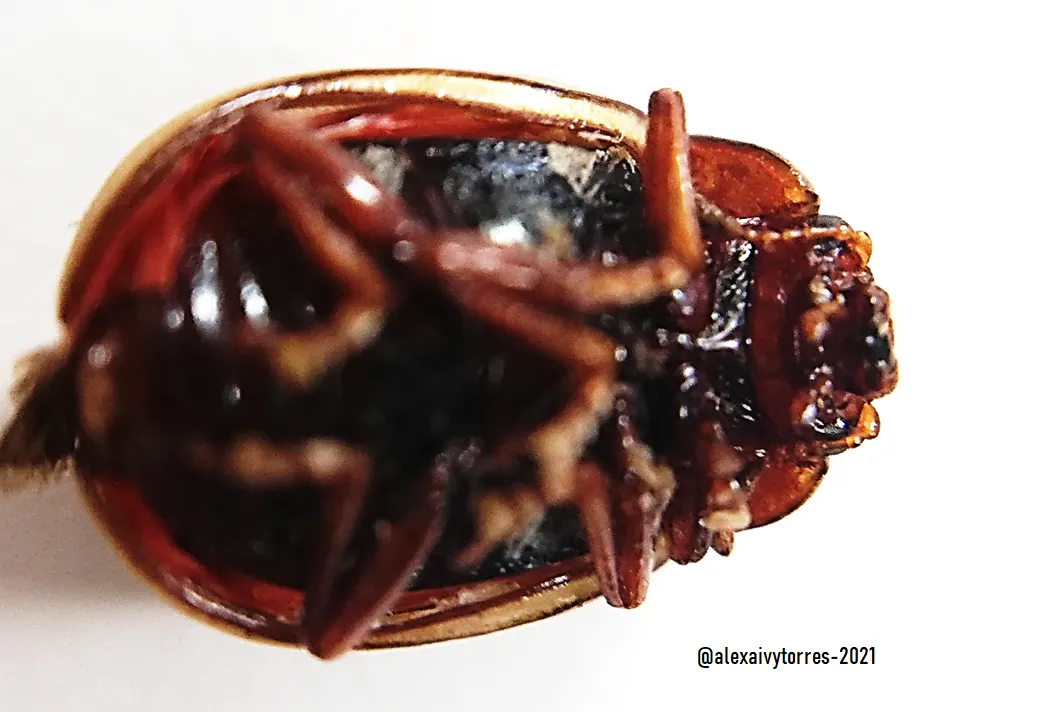
Las fotografias pertenecen a mi autoria y fueron capturados con dispositivo movil Huawei P2o con cámara Leica. se adaptaron lentillas para fotos macro y micro a 60X en modo profesional. Fueron editadas en Microsoft Power point
The pictures belong to me and were taken with Huawei P2o mobile device with Leica camera. Lenses were adapted for macro and micro photos at 60X in professional mode. They were edited in Microsoft Power point
Guido Bissanti - Leptinotarsa decemlineata
Leptinotarsa decemlineata
Leptinotarsa decemlineata
¡Gracias por leer! // Thanks for reading!

